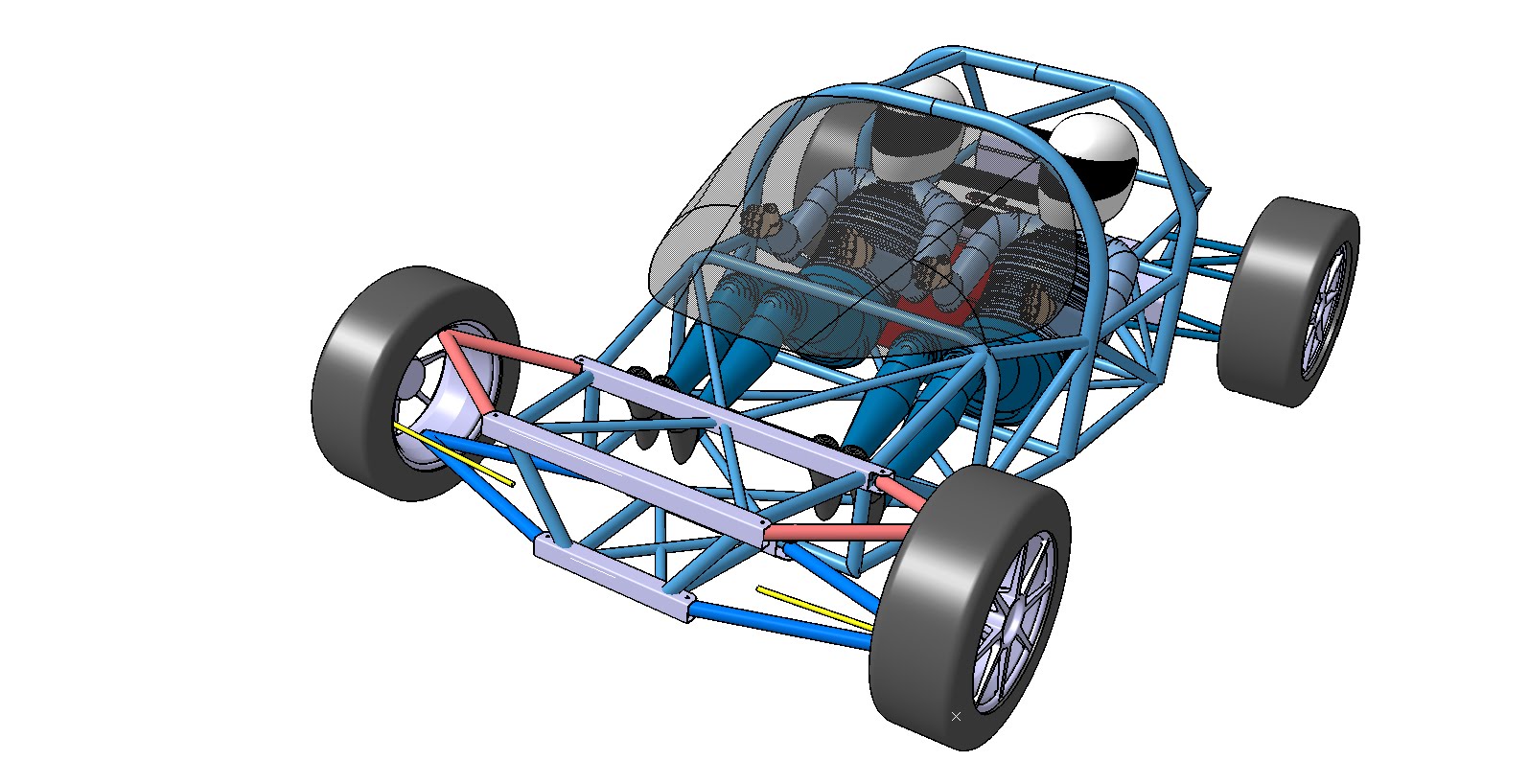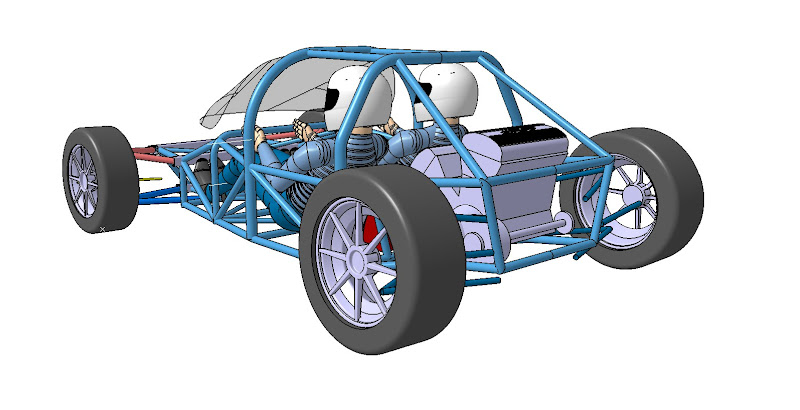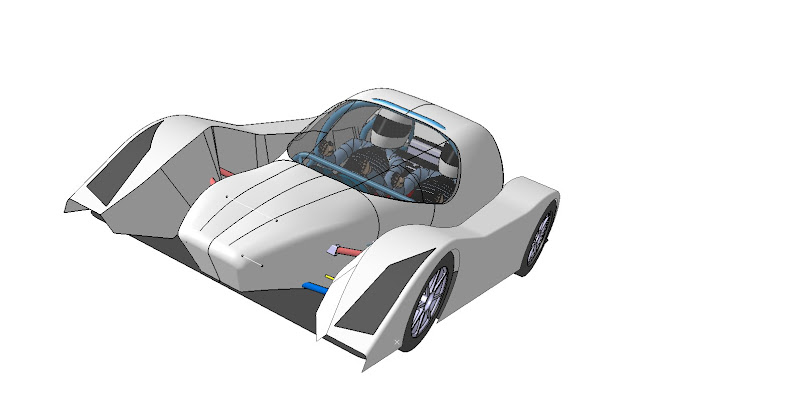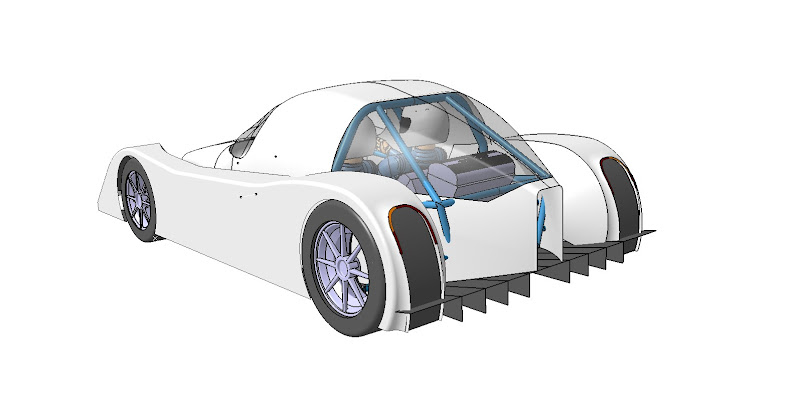Jersey Tom wrote:Are you concerned about the potential for excessive low-G oversteer with such a rearward weight distribution? What would the contingency be in that case? More tire size split?
Thanks for chiming in Tom, to be honest I am not concerned about low-G understeer because I'm completely ignorant to it. So I understand better, when you say low G are you specifically referring to the linear range of the tyres, or to low steering angles? For example, if the tyres are quite linear to 0.6G, do you speak of the range 0-0.6G, or is there some effect which causes a change in balance at very low levels of lateral acceleration say 0-0.3? Its something I haven't seen before.
I'm familiar with characteristics which see the
car's balance at a constant value in the linear range of the tyres, and then terminating in understeer at the limit (for road cars).
The mass distribution is rearward, but not out of the range of other vehicles. Since its impossible to come across tyre data for the tyres I want, I have done an investigation on tyre sizes using mass distribution information I have found from Auto Motor und Sport. For example here I've made two plots. the left one is relating tyre width distribution to mass distribution. The right one is showing the delta of tyre width dist to the mass dist. Here there is quite a distinct trend. The location of my
car in these plots is the red point, and you can see, its very close to the regression line. Not very scientific, but the best I can do given the information available.

On the left plot, I have seen a general, loose, trend which suggests a change of mass distribution of 1% requires a change in tyre width distribution of 0.168%. The right plot shows someething different. If it the difference of tyre_width_dist - mass_dist. Here there is a very strong relationship, but I dont really understand why. This is saying that at about 45%F mass dist, your tyre width distribution is also 45%F. As you move to a more rearward distribution, you obviously move to a more rearward tyre width distribution,
but the front tyre increases more in terms of the relationship to the mass dist.
So its saying that the more rearward you mass distribution is, the manufacturers are "over-tyring" the front axle in comparison to the mass distribution. Though, I dont read this as meaning oversteer though. Im 95% sure all of these vehicles are understeering in the linear and limit regions, but it seems there is a requirement for more front tyre as you shift the mass backwards.
Interesting, and I dont have an explanation for it.
So JT, to answer your question better, I don't expect I will be struggling with oversteer given this mass dist and tyres size choice. In both of these plots, I am operating in the same region of Lotus and Porsche, both of whom use about 38-39% of mass distribution, and tyre their cars with a width distribution of +5-6% of that.
Another factor in the tyre width is the engine power. Without going into detail of engine maps, gear ratios etc etc etc, you can already pull out a trend which suggests (unsurprisingly) more power requires more rear tyre. In fact, I have seen that every 10PS of power requires 1.8mm of extra rear tyre width.
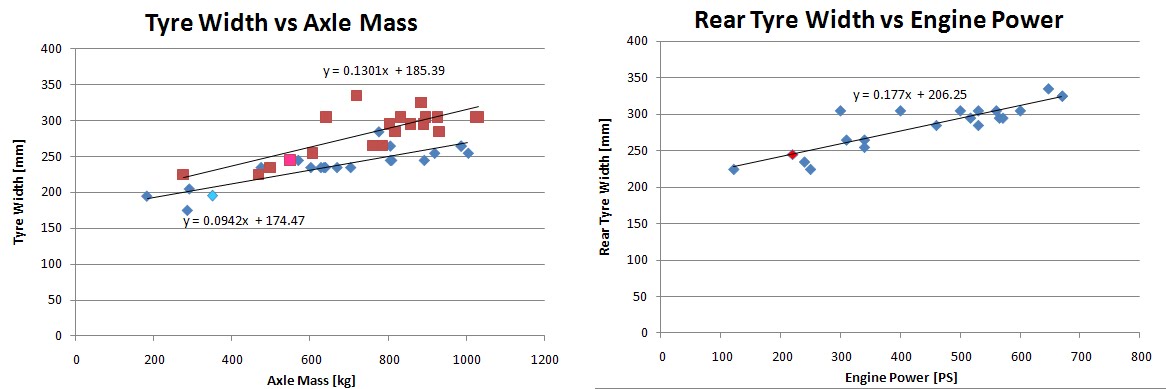
So in my case, an estimation of 220PS tells me I need approx 245mm rear tyres.
So where does this leave me? With front and rear tyres sizes that may or may not be ok. But at least I can move forward now.
By following what the manufacturers are doing I know Im at least not going to end up with massive handling problems due to the tyres. Im also pretty sure that, barring anything stupid happening in the suspension, the
car will have an understeering tendancy because this is how all manufacturers are designing their road cars these days.
I'm also aware that following the manufacturers I'm not guaranteed a brilliant hanlding
car. Tyre selection is only one (important) part of the mind f***, I mean jigsaw.
Tim
